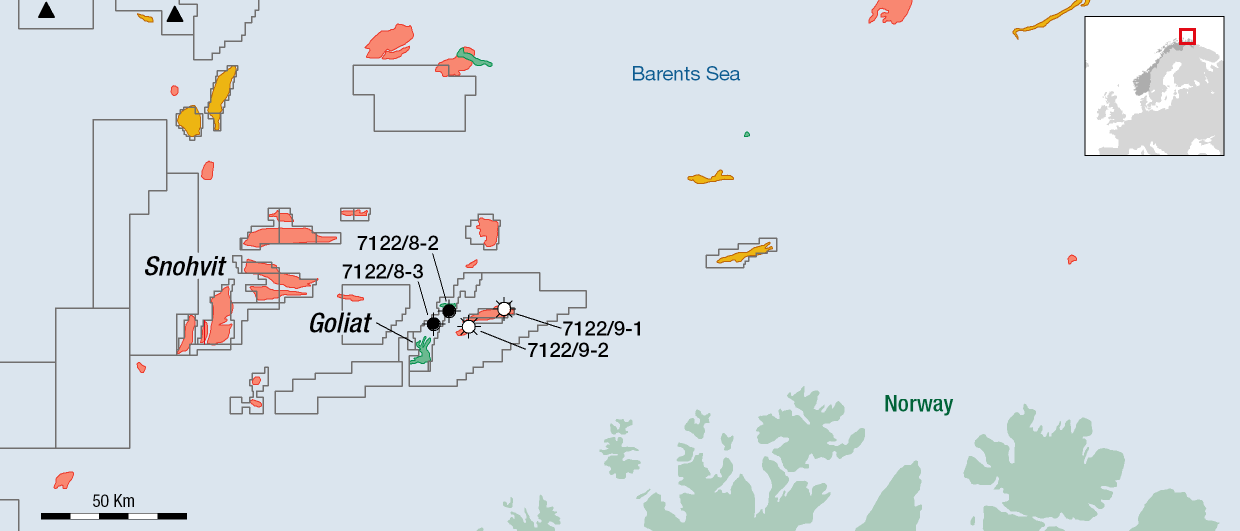“Within EMGS, we would have been very excited if additional prospectivity had been proven within the Snadd level related to the observed resistor. This could have been a play opener in this part of the Barents Sea,” says Dag Helland-Hansen, Global Exploration Advisor in EMGS.
“To make new discoveries on the NCS, technology is key, and for this the oil companies need to recognize the importance of the service industry,” says Torgeir Stordal, director of technology and coexistence at NPD.
7322/6-1S (Shenzhou) targeted petroleum in both Middle and Upper Triassic reservoir rocks (the Snadd Formation), and in Upper Carboniferous and Lower Permian reservoir rocks (the Ørn Formation).
However, the well came in dry at all levels, with poor to moderate reservoir quality in the Snadd Fm, possibly relating the observed resistor to resistive, cemented sandstones.
“Due to poor EM sensitivity, the EM technology could not be used to de-risk the deep Palaeozoic carbonate prospect, so we focused on the Triassic targets instead,” says Helland-Hansen. This article therefore solely refers to the Snadd Fm prospect.

A cautiously optimistic forecast
Readers of geoexpro.com will remember that the Shenzhou wildcat was located close to a resistor (geoexpro.com: “Another blow for the Barents Sea”) supposed to reflect a potential Triassic Snadd Fm accumulation. Based on the possibility that the resistor could have been caused by fluids like oil and/or gas (EM does not distinguish between type of fluids), it was therefore reason to be optimistic with respect to a discovery in this (large) prospect.
EMGS refers to the conclusion from the LinkedIn article by Lodve Berre: “Making Sense of Shenzhou”.
For the Lower Snadd targets, Lodve Berre concluded that a resistor is observed at the target level. However, its extent was significantly smaller than the target outline and it is unclear if the resistor was actually penetrated by the well-bore. With this in mind, along with the significant false positive risk, the article was cautiously optimistic about this prospect and updated the chance of success slightly, while simultaneously reducing the expected volumes.

High hopes for Shenzhou
With respect to volumes, it is noteworthy that both Aker BP and Lundin Energy Norway did in fact have strong belief that Shenzhou could be a “giant discovery”, i.e. more than 500 MMbo (geoexpro.com: “We will know in a few weeks’ time”). Although it is not known what the mapped share of the Triassic was in the overall volumes, does the Shenzhou well outcome now mean that exploring for the Triassic in the Barents Sea has no future any more?
Huge discoveries cannot be ruled out
EMGS is optimistic that “giant discoveries” may still be made in the Triassic in the Barents Sea. “As evident from the average resistivity image [see figure below], we do have several large anomalies with significantly higher resistivity than in the vicinity of the Shenzhou well”, Elias Nerland, Interpretation Advisor in EMGS, says.
“These conform with the outline of the structures, and if hydrocarbon filled, the bulk rock volumes might be very large. There is however a false positive risk in tight sandstones,” he adds. “None of these anomalies have been drilled yet”, Martin Hansen, Director of Sales in EMGS, says. “We are hopeful that some of these will be tested in the future”, he says, with a clear recommendation to the oil companies looking for new plays in the Barents Sea.
HALFDAN CARSTENS





